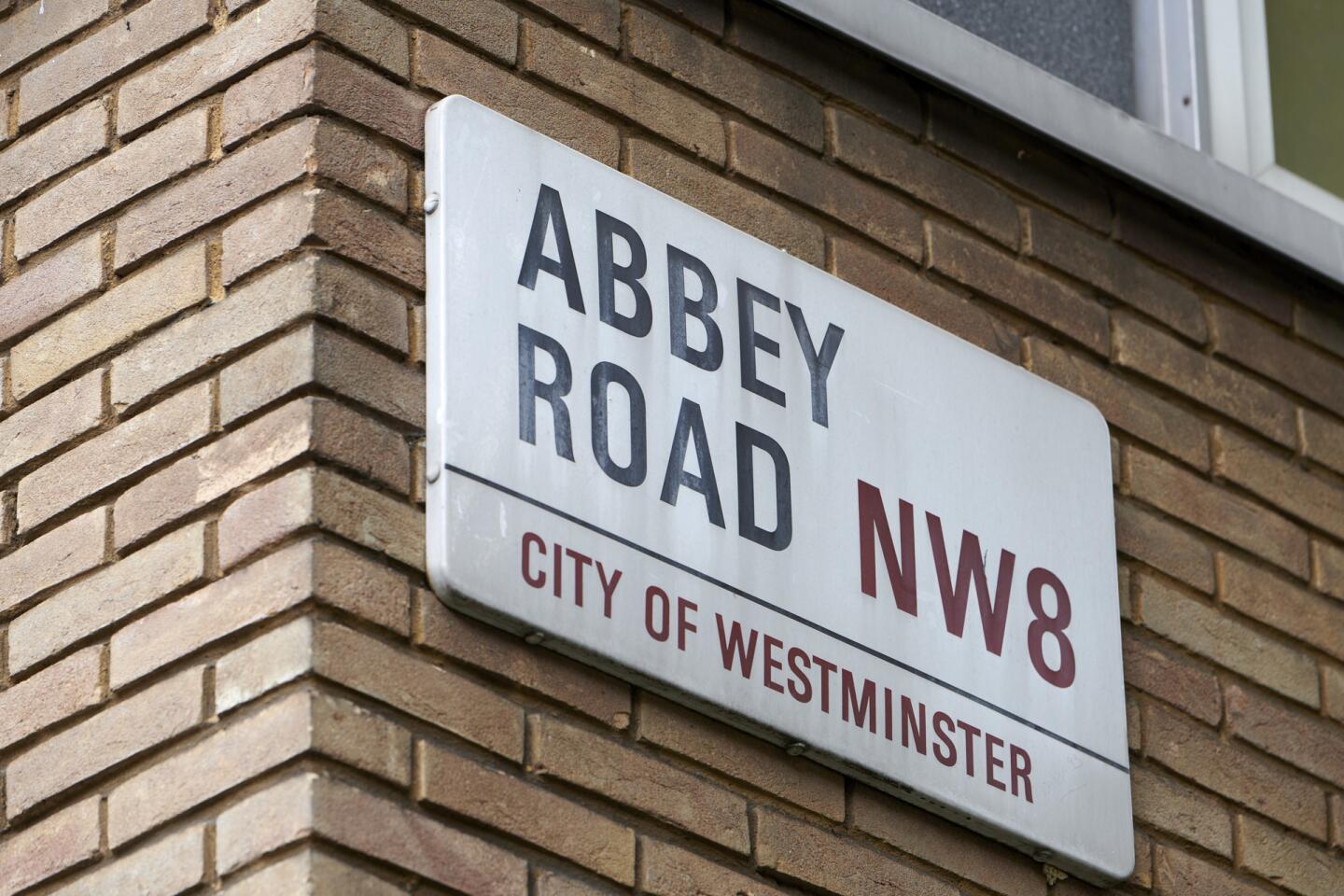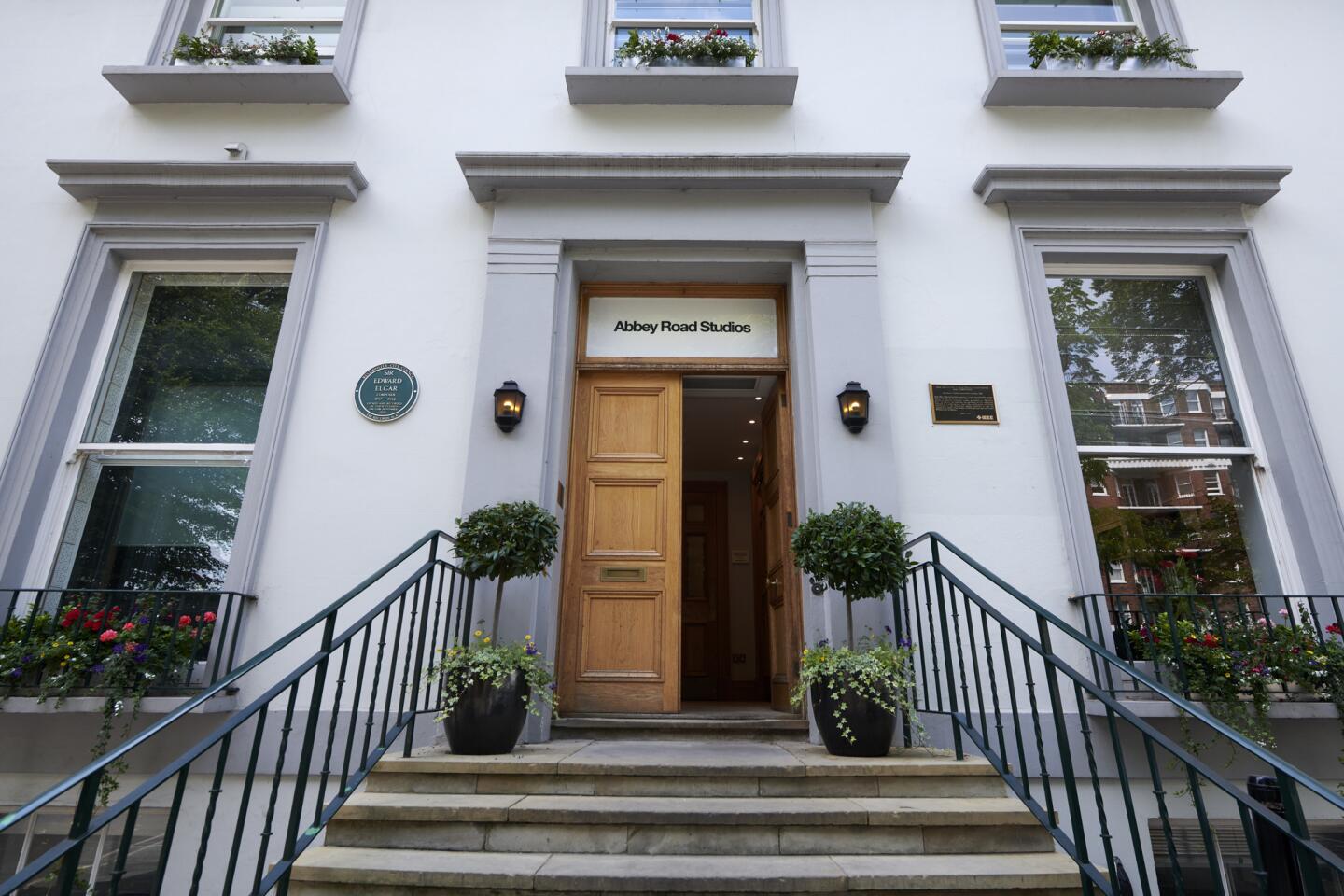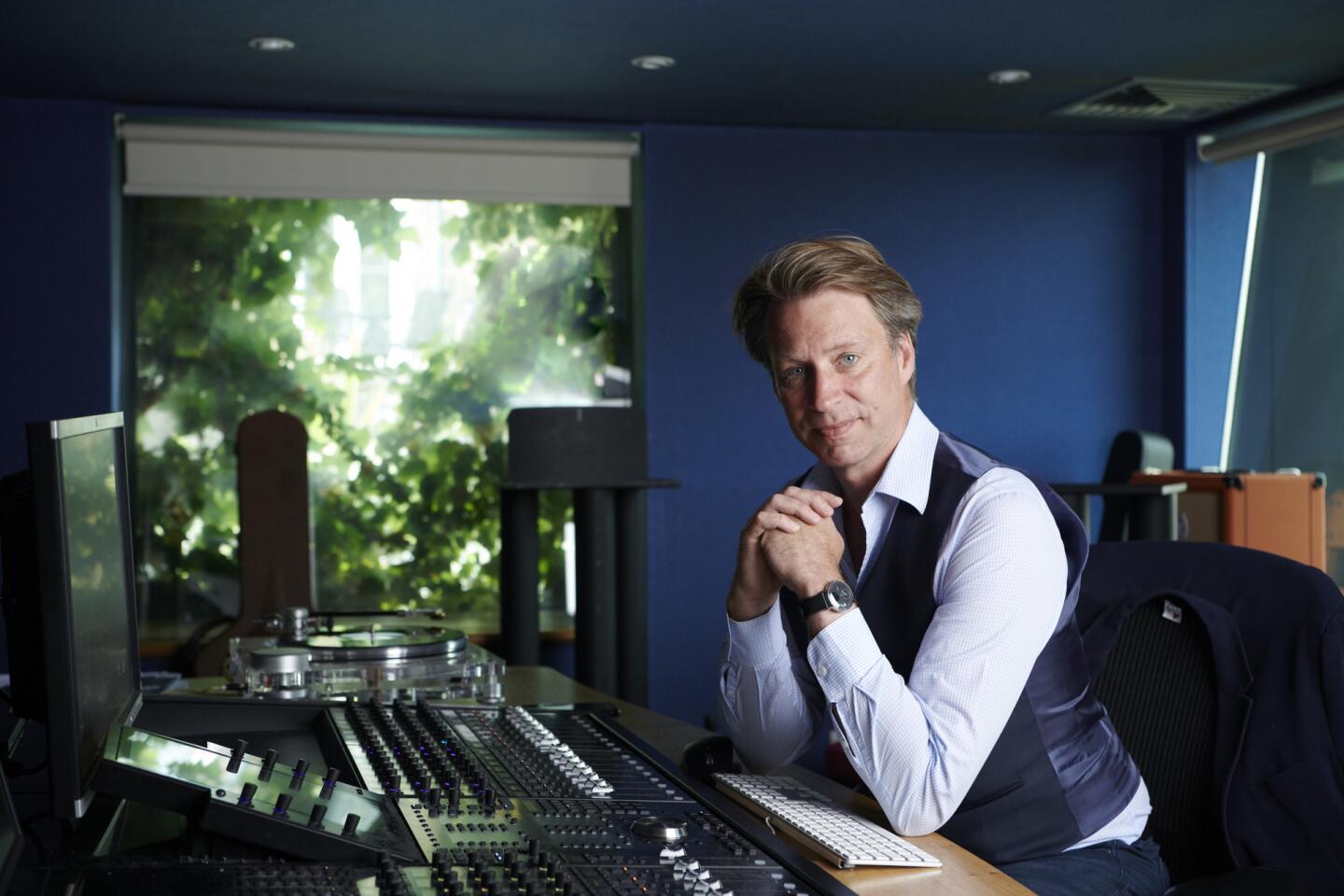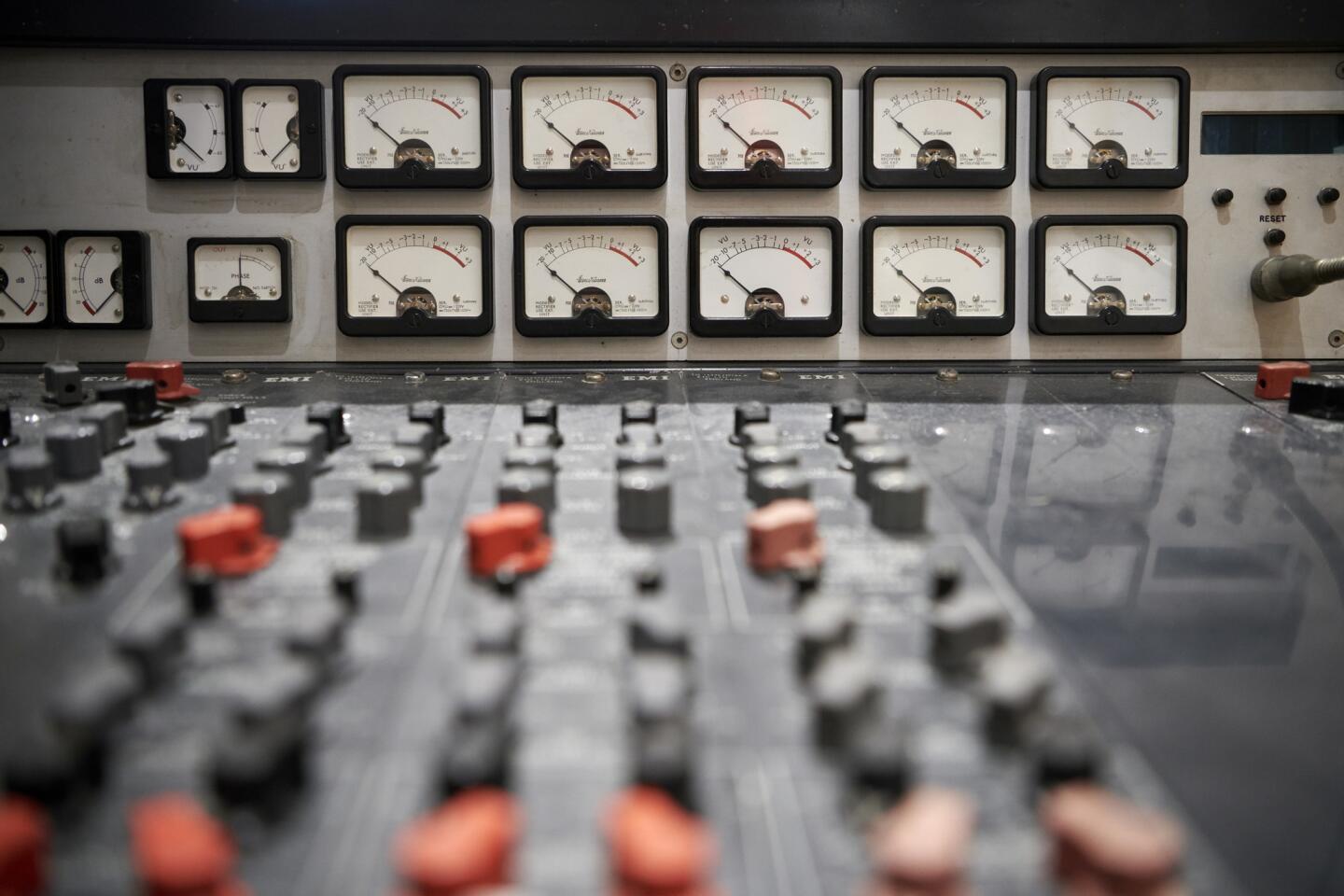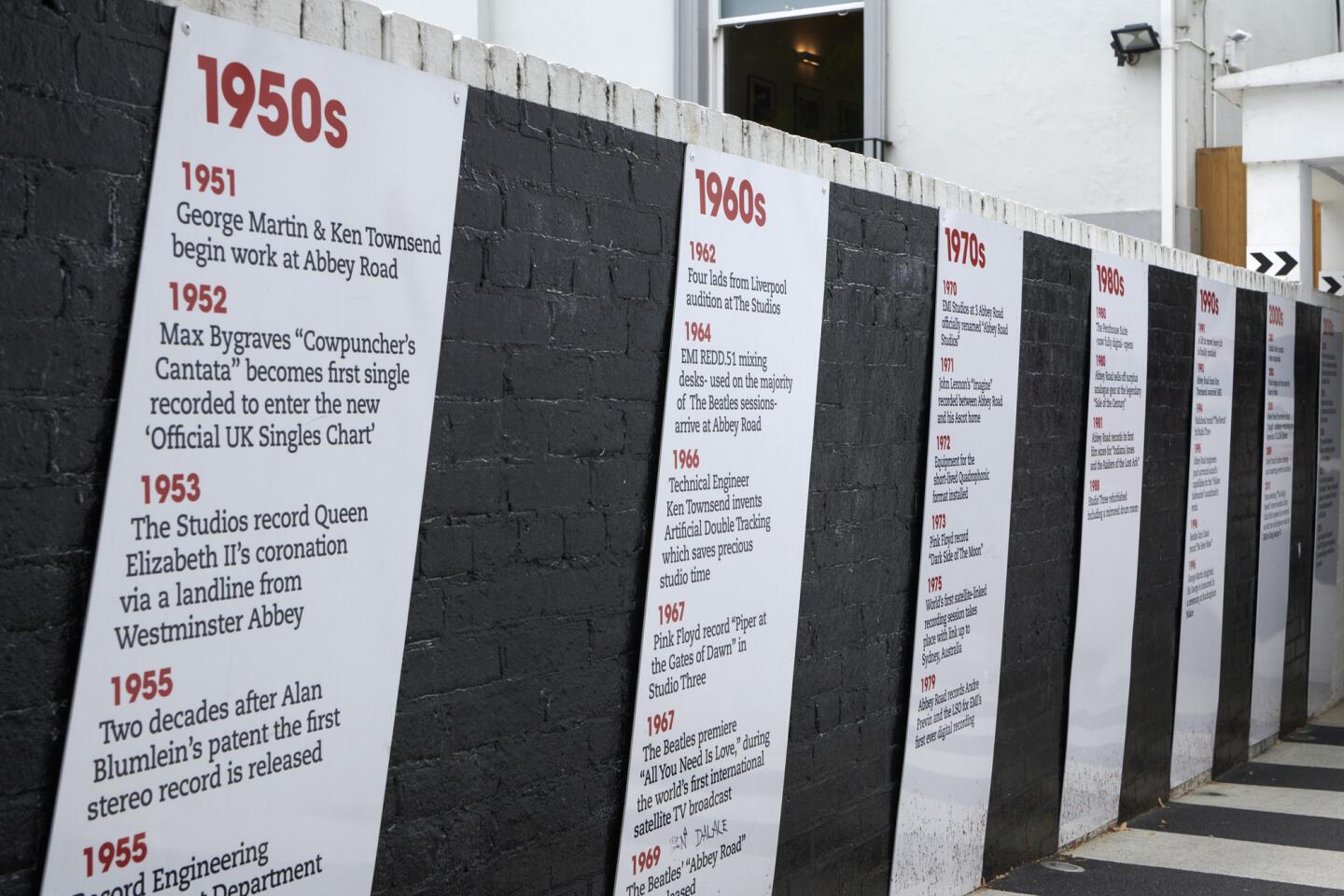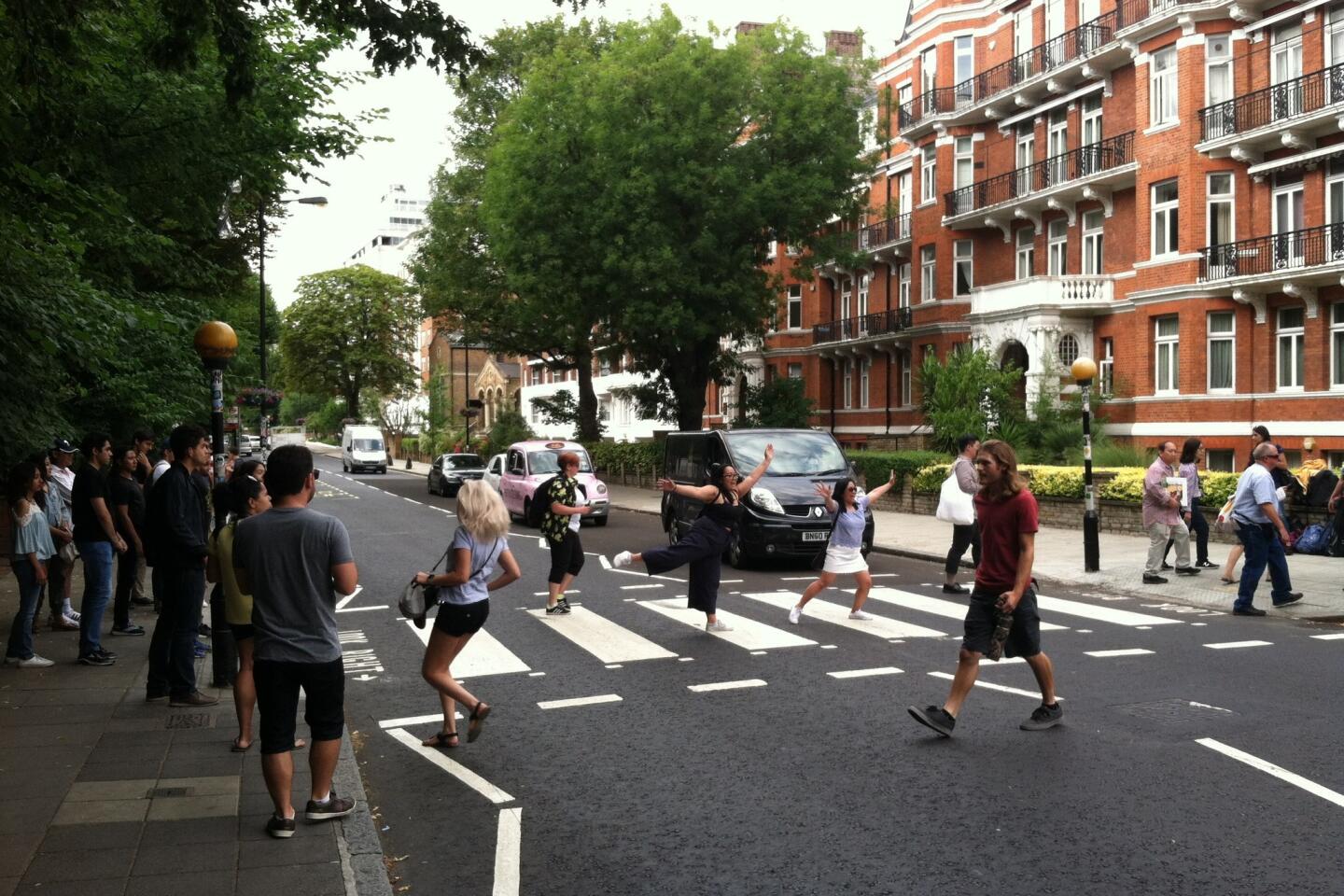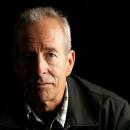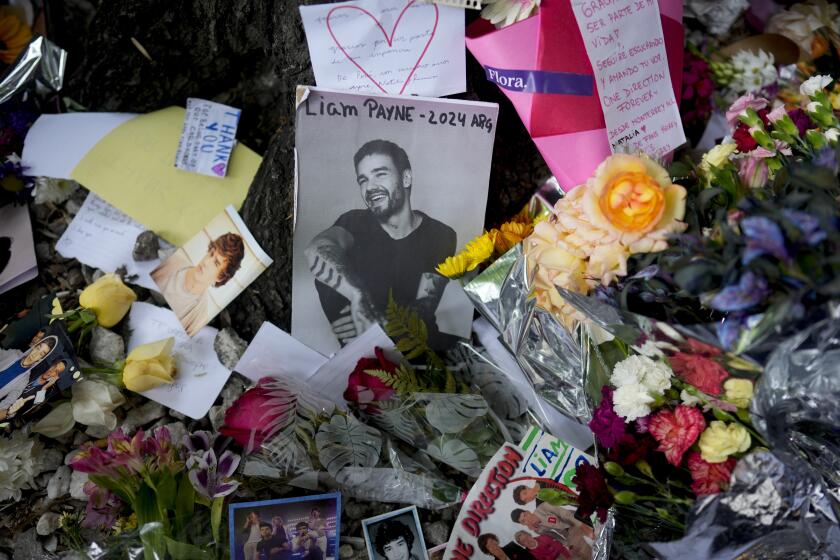Digging into the Beatles’ 50th anniversary ‘White Album’ box set where it all began: Abbey Road

Giles Martin talks about what makes the White Album so special, and the approach he took to remastering the record without taking away from it.
Reporting from St. John’s Wood, London, England — A telephone rings in a corner of Giles Martin’s private mixing room at Abbey Road Studios, catching the latter-day producer of Beatles recordings by surprise.
“That never rings,” he says, reaching over to pick up the receiver. It’s his wife, Melanie, calling from their 23-acre farm about 80 miles away with happily urgent news: Eggs laid by one of the ducks they keep — alongside sheep, horses and other farm creatures — were starting to hatch. By the next morning, all seven eggs will yield ducklings.
Martin, 49, is visibly relieved at the farm report, which may well be a good omen for another septuplet delivery he’s shepherding into the world: a seven-disc 50th-anniversary box set revisiting the Beatles’ 1968 double album “The Beatles,” colloquially known as the White Album.
It was, in many ways, the Beatles’ most ambitious, most sprawling studio creation and demonstrably the biggest commercial success of the group’s fabled career: It has sold more than 19 million copies in the U.S. alone, according to the Recording Industry Assn. of America, the body that awards gold and platinum certifications.
The new edition is due Nov. 9 — 13 days short of the actual 50th anniversary of its release Nov. 22, 1968 — and it follows last year’s 50th-anniversary reissue of “Sgt. Pepper’s Lonely Hearts Club Band.” That was the first Beatles album to be fully remixed, not just remastered, for a new generation of listeners as well as fans who grew up with the original.
The “Sgt. Pepper” remix scored a perfect 100 on Metacritic.com’s aggregate review website for the fresh perspective on that rock masterpiece brought about by Martin and his collaborators at Abbey Road, which the Beatles helped turn into arguably the most famous recording studio in the world a half-century ago. Not a day goes by that dozens, sometimes hundreds, of Beatles fans show up at the studio’s iron gate, ever-hopeful to glimpse a Beatle or other rock star working there.
Following the acclaim generated by the “Sgt. Pepper” update, Martin’s attention has turned to the wildly diverse album that gave the world the soon-to-be-Beatles classic songs “While My Guitar Gently Weeps,” “Back in the U.S.S.R.,” “Dear Prudence,” “Birthday,” “Helter Skelter,” “Cry Baby Cry,” “I Will” and “Happiness Is a Warm Gun” among its 30 tracks.
“I thought the White Album would be the easy one,” Martin says ruefully.
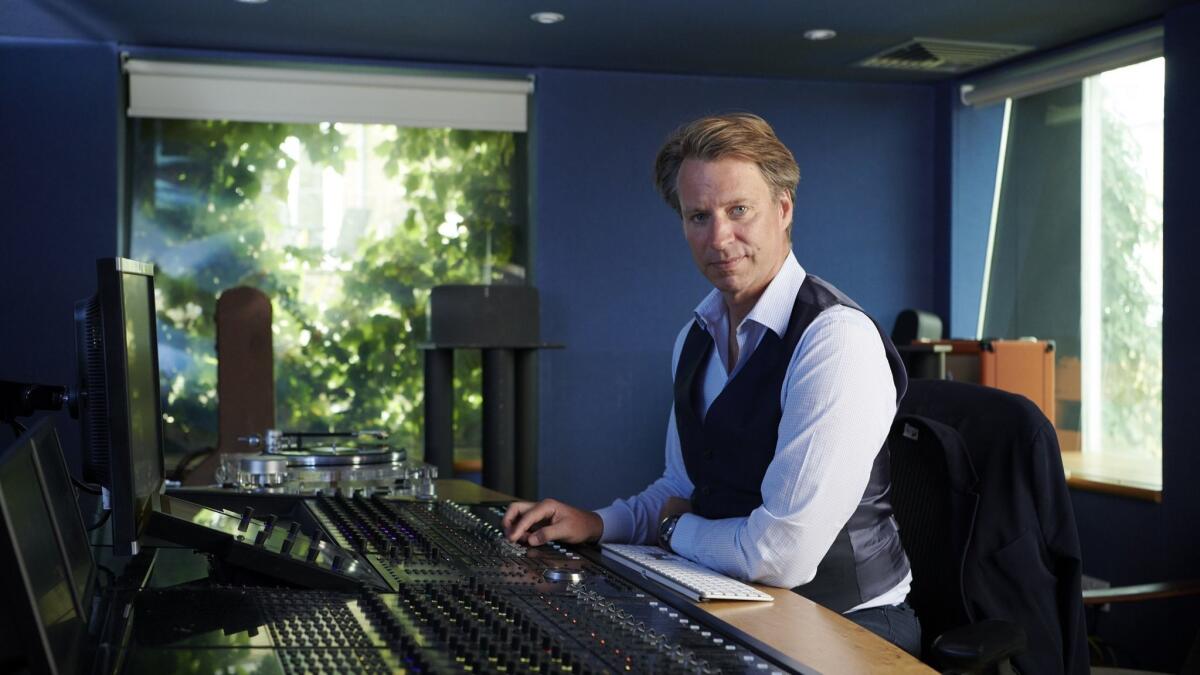
It’s an unexpected statement, perhaps, given how musically, thematically and sonically varied that collection is compared to “Sgt. Pepper.”
But Martin is in a unique position to make the evaluation: Over the last dozen-plus years, he has assumed the mantle of supervising production of globally beloved works originally overseen by his father, Sir George Martin, who guided the group’s recording career from the quartet’s first session in August 1962 through its swan song seven years later.
The vast majority of those sessions played out at what was then known as the EMI Recording Studios, a complex that became world famous as Abbey Road Studio only after the band titled its 1969 album for the quiet suburban street on which the facility resides and where fans regularly stop local traffic to pose for photos in the iconic striped crosswalk between the two curbs.
A garage-band album
The 50th-anniversary package of the White Album — so named for its groundbreaking plain white cover with the band’s name subtly embossed, off center, and an individual serial number stamped on original pressings — offers the deepest dive yet into the Abbey Road archives of Beatles material.
The mountain of recordings offered in several configurations — including a particularly rich seven-disc super deluxe box set (listed on Amazon for $138.74) — reflect both a creative outburst that was impressive even by Beatles standards and an evolution in the band’s working process — conceiving, developing, nurturing and polishing songs in the studio while tape was rolling rather than perfecting songs through live performance as they’d done in their earliest sessions.
The bonus tracks in the new edition, drawn from that wealth of raw material, are generating at least as much excitement among Beatles enthusiasts as the upgraded sonics of the original album.
One disc contains 27 “Esher [pronounced EE-sher] Demos”: primordial versions of 19 songs that ended up on the White Album plus others they were working on at the same time, such as George Harrison’s bypassed songs “Not Guilty” and “Circles,” and John Lennon and Paul McCartney’s whimsical ode to pot, “What’s the New Mary Jane.”
Many had been written, or at least started, during the band’s trek to India early in 1968 to study Transcendental Meditation with the Maharishi Mahesh Yogi.
The demo versions were recorded upon their return during initial work at Harrison’s house in Esher, a town in Surrey outside London. These versions have been bootlegged for years but in poor-quality transfers from second-, third- and fourth-generation sources.
The original two- and four-track tapes were discovered in recent years among Harrison’s things at his Friar Park Estate, resulting in the sonically superior recordings included with the 50th-anniversary reissue. Martin encountered them while working with Olivia Harrison selecting music for Martin Scorsese’s 2011 Harrison documentary “Living in the Material World.” He said they were housed in boxes marked simply “Beatles 1,” “Beatles 2,” “Beatles 3,” etc.
The set includes three more discs with 50 tracks, the majority never previously released, spotlighting alternate takes of most White Album songs, bits of studio chatter allowing fans to eavesdrop on their working methods, and assorted songs they also tackled during those sessions but that didn’t end up on the album.
There’s a slow, simmering workout on “Helter Skelter” before it turned into a blistering rocker — Giles Martin opted for relative economy of a 13-minute jam rather than the even more expansive 27-minute take lurking in the Beatles’ vault. Ringo Starr’s famous screeched ending to the song — “I’ve got blisters on my fingers!” — however, erupted after one of the group’s more adrenaline-charged takes. There’s also on extended run-through of “Revolution 1” that tops 10 minutes, as well as tracks isolating instrumental backing or a cappella vocals from various songs.
The “Sessions” discs also include the singles “Hey Jude,” “Revolution” and “Lady Madonna” as well as “Across the Universe” and fascinating one-off cover versions of other artists’ material including the blues standard “St. Louis Blues” and a couple of early Elvis Presley favorites: “Blue Moon” and “(You’re So Square) Baby I Don’t Care.”
The seventh disc is a Blu-ray disc with high-resolution versions of the new stereo and 5.1 surround sound mixes of the album’s 30 songs plus a direct transfer of the original monaural mix of the White Album.
A 164-page hardbound book with the super deluxe edition combines extensive notes on the songs, previously unreleased photos, reproductions of original handwritten lyrics, introductory essays by McCartney, Giles Martin and Beatles authority Kevin Howlett and other documentation of the album’s creation.
Fans wanting to dig even deeper into the stories and music of the White Album have other recent resources available including the White Album installment of the DVD series “Deconstructing the Beatles” with musicologist Scott Freiman as well as historian Bruce Spizer’s forthcoming book, due Nov. 22, “The Beatles White Album and the Launch of Apple,” the group’s own label that they launched with the double LP.
Martin’s initial expectation that remixing the White Album would be “easy” compared to “Sgt. Pepper” stemmed from essential differences between the works:
“Sgt. Pepper” represents what may have been the zenith of band’s revolutionary work with George Martin for which they conceived the recording studio itself as a tool as creatively important as their guitars, keyboards, drums and other musical instruments. The result was a dazzling explosion of new possibilities for making records that continues to resonate today.
The White Album, however, was more of “a garage-band record,” Giles Martin thinks. The band often spent hours, or days, in the studio developing ideas while tape was rolling — a stark contrast to their earliest efforts when songs had been whipped into shape through hundreds of hours of live performance.
The ambitious application of studio technology and techniques that came to the fore in “Sgt. Pepper” continued with their 1967 double A-side single “Strawberry Fields Forever” and “Penny Lane” and in their songs for “Magical Mystery Tour,” which was not considered a bona fide successor to “Sgt. Pepper” because in England it was a six-song double EP, not a full album.
By the time the foursome returned from India and began work on a new album in May 1968, however, Lennon, McCartney, Harrison and Starr had become increasingly confident in their abilities to call the shots in the studio. In Giles Martin’s view, they also increasingly missed playing together as a band.
The White Album, consequently, “was more of a band album…. They were trying to get back to playing as a band again,” Martin says. “They were less interested in producers and engineers.”
That’s one reason that recording engineer Geoff Emerick, who previously helped realize some of the most innovative facets on “Revolver,” “Sgt. Pepper” and “Magical Mystery Tour,” walked out during the White Album sessions.
Giles Martin notes that his father often rolled his eyes when fans described the White Album as their favorite — but more because of his memories of demanding all-night recording sessions that laid waste to conventional studio practices.
“It wasn’t always a pleasant experience for my father,” Martin says. “The students had taken over the classroom, and he was no longer the architect of their sound.”
Furthermore, sessions for the White Album began almost two years after the group famously retired from touring in August 1966 out of frustration from being unable to hear themselves during concert performances, playing for audiences who also couldn’t hear the music above the roar of screaming Beatlemaniacs. Their time making “Sgt. Pepper” was creatively liberating but often at the expense of playing music in real time with one another.
That aligns with one of Starr’s favorite memories of that album, even though at one point he also quit the group for two weeks.
“I love ‘Yer Blues,’ ” Starr, 78, says during a separate interview in Nice, France, where he hosted his 10th Peace & Love birthday celebration this year. “We’d got through ‘Sgt. Pepper.’ Yes, it was great, but you know, for me, I love being in a band, and on the White Album, we became a band again.
“We got in a room that was like 8 feet square with everything we needed, and John sang his heart out and we all played looking at each other,” he says of a cramped room in the back of Abbey Road’s Studio 2, a utility room that no longer exists.
Work on “Yer Blues” was a big difference from their experience with “Sgt. Pepper,” which often involved work hours and even days at a time individually on tracks that were built from the ground up and stitched together during the mixing process by Martin and “the lads.”
‘Sessions’ revelations
The “Sessions” discs offer a wealth of insight into the Beatles, not just as supremely gifted musicians but as dedicated craftsmen and enthusiastic experimenters as well.
There are also moments of extreme intimacy that make the band that famously “changed the face of pop music as we know it” all the more human.
Before expressing uncertainty whether to play a new song strumming his acoustic guitar or using the finger-picking technique he’d picked up in India from Scottish folk-rocker Donovan, Lennon confesses, “It’s very hard to sing this, you know.”
A reply comes back through the mixing booth’s microphone, a tone of fatherly empathy in George Martin’s voice when he says, “It’s a very hard song, John.”
They’re discussing “Julia,” named for Lennon’s mother, who died after being struck by a car when John was 17. It also was something of a love note inspired by his new relationship with Yoko Ono, who became a regular presence in the studio during the White Album sessions.
It’s one of the many discoveries that are coming to light in the 50th-anniversary set. The dialogue snippet, and the version of “Julia” that follows, turned up on an uncataloged tape, one of many that Abbey Road archive engineer Matthew Cocker threaded up and listened to in its entirety. After 20 minutes of blank tape, suddenly he heard the exchange between Lennon and Martin and another attempt at bringing “Julia” to fruition.
Another fetching moment comes in an alternate version of “Good Night,” the lullaby-like ballad Lennon gave to Starr to sing.
On the original version that closes the album, Starr’s vocal is bathed in a lush orchestral arrangement by George Martin. Earlier, however, the band plays with and for him — Lennon, McCartney and Harrison lifting his vocal performance up with their sympathetic harmonic support.
It’s a much rawer but exceedingly sweet performance of Lennon’s unabashedly romantic, unapologetically sentimental composition.
“They gave me those songs to do,” Starr says, lumping it in with the likes of previous Lennon-McCartney songs written with him in mind including “With a Little Help From My Friends” and “Yellow Submarine.”
“I’m the only one who could do that,” he says proudly, at which point he begins to croon the opening lines for a visitor seated beside him on a sofa at the Hard Rock Café in Nice: “Now it’s time to say goodnight / Good night, sleep tight…”
Then he laughs: “They ruined my career! I was a rock drummer and they gave me that!”
“Ringo probably had the hardest job in the band, playing for hours and hours, and he probably shared the same view that we occasionally had, ‘I played that last night for nine hours. Do I have to do it again?’” second engineer Richard Lush told Beatles biographer Mark Lewisohn in his 1988 book “The Complete Beatles Recording Sessions: The Official Story of the Abbey Road Years 1962-1970,” newly reissued in September. “He had a hard job trying to please them.”
Asked whether he believes Martin’s new mix of the White Album will give fans a better idea of what he and his bandmates heard within the hallowed walls of Abbey Road studio 50 years ago, Starr scoffs.
“Those speakers EMI had were terrible!” he says.
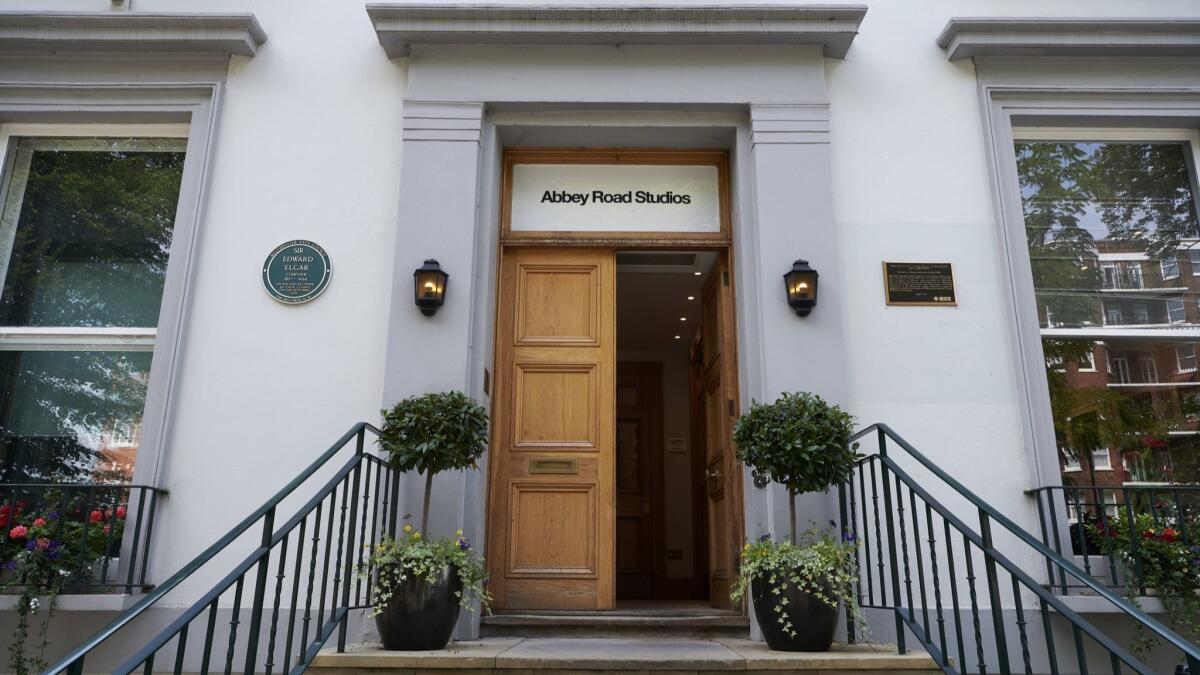
Repainting a masterpiece?
As with “Sgt. Pepper” last year, the new mix of the White Album doesn’t radically alter the essence of the original. Instead, remixing it a half-century later from the original tapes enhances the sonic impact of those recordings, which typically were compressed to comport with playback on audio equipment of the time. The sound digs deeper, reaches wider and has greater immediacy and overall is more open.
The first thing most listeners will notice is more visceral punch from the bass and drums, instruments that sometimes created problems for mastering engineers decades ago. Additionally, the recordings gain clarity and definition — the percussive power of McCartney’s piano on “Martha My Dear” more evident, the earthy richness of the saxophones in Harrison’s “Savoy Truffle” fuller, the intensity of Lennon’s vocal on “Yer Blues” all the more gripping.
Such upgrades on archival projects such as this can elicit mixed reactions among purists.
“It’s like catnip for me,” Mike Campbell, lead guitarist of Tom Petty’s Heartbreakers, tells The Times. “I love that kind of stuff.”
His longtime band mate, keyboardist Benmont Tench, chimes in, “I’m always curious about anything that has to do with those guys. That is just a beautiful piece of work. It goes everywhere in the world, and it works. That record is earth-shattering to me. And those guys did record after record that are still earth-shattering.”
At the same time, Tench says, “I don’t want a new mix. Don’t go like George Lucas did [with modified editions of ‘Star Wars’]: Don’t repaint the masterpiece. When I get a record, I want to hear the record that moved me in the first place. I don’t need to hear the kick drum more clearly. I don’t need to hear anything more clearly on [Elvis Presley’s] ‘That’s All Right Mama.’ I don’t need to hear anything more clearly on a Robert Johnson record.
“I don’t mean disrespect to Giles Martin — he’s brilliant,” Tench says. “Extra stuff? Yes, I’m dying to hear what they did. But a remix of the White Album? No, thank you.”
Martin knows well the competing interests at work in the modern-day editions of classic recordings.
“There’s one side of a fence — which is actually more the Beatles’ side — that says, ‘Why should we be playing outtakes? They’re outtakes’,” he says.
“And there’s the other side [of fans and Beatles collectors] that says, ‘We want everything, and we want it now. I think my job, in a way, is to curate that, to balance that so that it’s all valid. Because once you put something out, it’s out forever.”
“The biggest question I always ask myself, and everyone else,” he says, “is ‘Why are we doing this?’ ”
“We had good reason to go back and revisit ‘Pepper’ in the stereo world,” he says of the motivating reason behind last year’s remix: The Beatles were minimally involved in the stereo version because in 1967 their primary focus was on monaural mixes of their recordings. Consequently, the new stereo remix of “Sgt. Pepper” garnered the bulk of the public’s attention. The alternate takes, demo recordings and other extra material packaged with it were treated as bonus tracks — the icing on the cake.
“On the White Album, we became a band again.”
— Ringo Starr
A year later, however, priorities were different. By 1968, the Beatles were much more attentive to the stereo mix of the White Album.
“It wasn’t until we started compiling stuff and going through the outtakes and the Esher Demos and everything else that I started to realize that this is probably more about all of the other bits and pieces as it is about the remix,” he says.
“I’m not putting the remix down in any way,” Martin says. “I’m really proud of that. I think it sounds really good, and people seem to like it.
“It’s really the depth of creation about the White Album” that is the focal point this time, he says. “Every project is different, and that’s what’s fun. The thing about the White Album is it shows the band taking more control. It was made in different way [than ‘Sgt. Pepper’] and that’s reflected in the work that I’ve done on it, I suppose.”
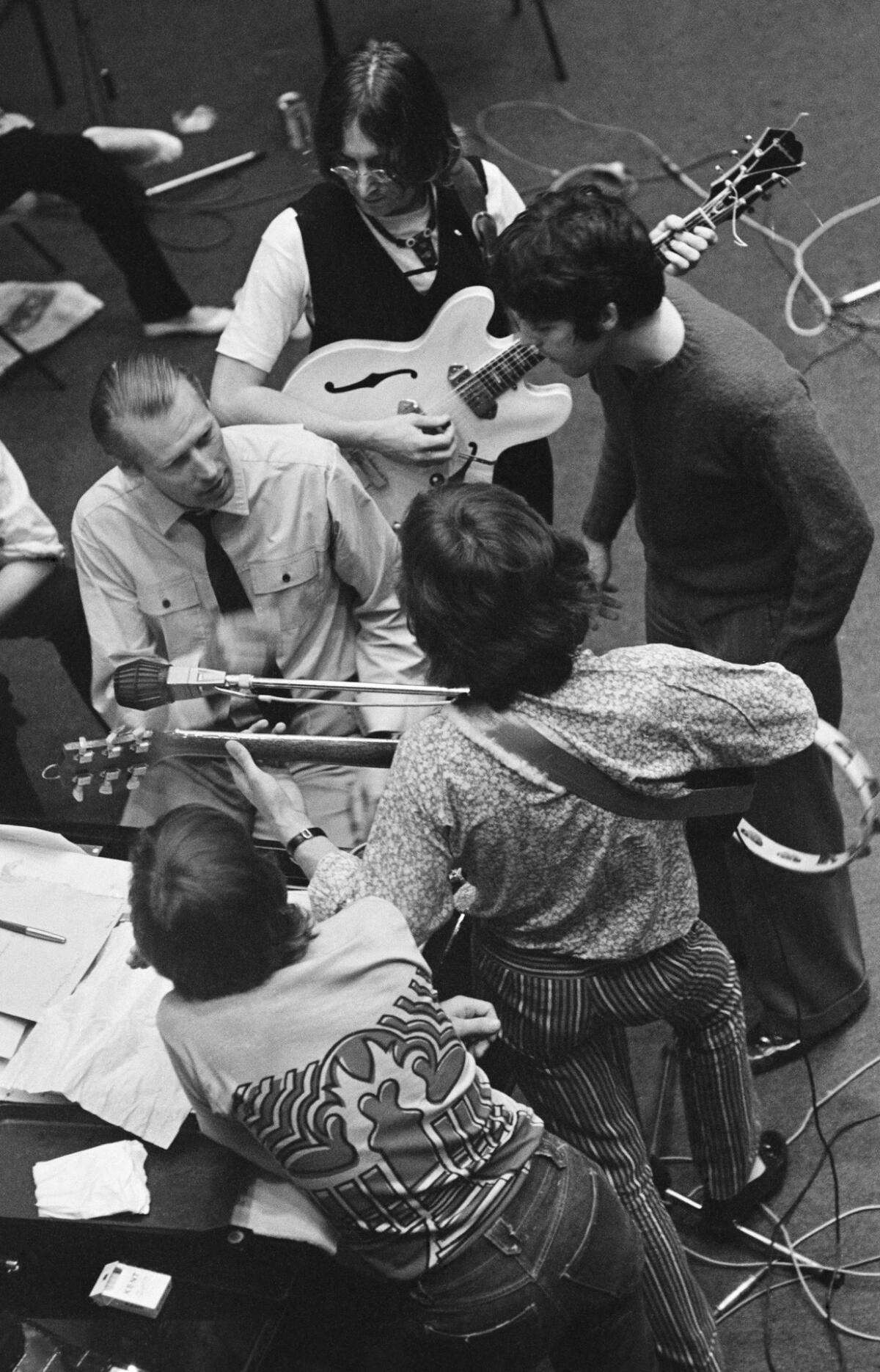
Indeed, the deluxe version’s three “Sessions” discs pull back the curtain on the group’s creative process as it continued its ever upward and outward expansion.
“The Beatles did think in terms of albums, from ‘Rubber Soul’ onward, and they knew they had this towering oak tree of ‘Sgt. Pepper,’ critically and commercially successful,” says Beatles scholar Martin Lewis. “They weren’t in fear, but they were very conscious that the eyes of the world were going to be on them. Most artists would have thought, ‘How do I top it?’ But they didn’t approach it that way.
“Instead, they went on a group vacation to India and effectively cut themselves off from the world,” Lewis says. “There were no telephones, no radio, no TV. You might wonder how could they create in that vacuum? But you carry all your parts in you, and the tranquility of being in India brings forth an incredible amount of new songs.
“They were like sponges, soaking up everything,” Lewis says. “What they did with the White Album is they absorbed everything in the atmosphere around them, ran it through their food processor and it comes out in this incredible way: it’s a patchwork quilt, or as [filmmaker/journalist] Tony Palmer described it at the time, this ‘Bayeux Tapestry’ of rock, folk, country, blues, bluegrass, vaudeville music, John Cage experimentation with aural collage. But it’s not a conscious thing; it’s not studied. It was simply an outpouring of the muse.”
“Few artists had the breadth and range they did. The Beatles, because of where they’d ascended to — and I think they are unique in this — were able to take their eclecticism and make it a virtue.”
Not yet divided
Two months after Giles Martin has previewed a substantial chunk of the massive White Album 50th-anniversary release for The Times at Abbey Road, he returns to Los Angeles for a broader press preview of the project for an audience of about 60 writers and other music industry members at Capitol Studio A in Hollywood.
With even more time to reflect on what place the album holds in the group’s extraordinary artistic oeuvre, Martin concludes: “They didn’t want to make another album like ‘Sgt. Pepper,’ I think — much to my dad’s disappointment — or even go to the next stage of ‘Sgt. Pepper,’ which I think was his intention.
“The White Album is a band working together without my dad pulling the strings,” Martin said.“I think ‘Let It Be’ was my dad not pulling the strings and the band falling apart. And ‘Abbey Road’ was a band that was separate and my dad pulling it back together again.”
He’s also come to discount conventional wisdom about the White Album as a document of the beginning of the end of the Beatles. One popular bromide is that “The White Album is less a Beatles album than four Beatle solo projects.”
As Starr puts it, “Whatever else was going on, after the count-in [on any song], we were always a band. It didn’t matter whose song it was. Nobody said, ‘I’m not interested because it’s not my song.’”
Martin was on the lookout for any evidence of the kind of tensions that director Michael Lindsay-Hogg caught on film when he made the “Let It Be” film a year later.
“If there was anything on the tapes that supported that idea, I would have included it — I would feel obligated,” Martin says. “But it just wasn’t there.
“There are these snippets of conversation between them that are kind of relaxed even after 70 takes. That’s not the sound of a band falling apart. And when they locked themselves in that small room to record ‘Yer Blues,’ that’s not something musicians who are at each other’s throats do.”
In a quick aside in a hallway outside the Capitol Studios during a break, Martin provides an update for his Abbey Road visitor, proving that even 5,400 miles away and two months down the line, he hasn’t forgotten those other septuplets that recently came into his life.
“The ducklings?” he says with a sheepish grin. “They survived — all seven. They’re doing great.”
ALSO:
A 50th anniversary trip through ‘Sgt. Pepper’s Lonely Hearts Club Band’ with Giles Martin
A closer look at ‘Yellow Submarine,’ the Beatles film that ‘crossed generations’
The Beatles’ ‘All You Need Is Love’: It was 50 years ago today
The Beatles’ best album is really its worst. ‘Sgt. Pepper,’ we need to talk
Follow @RandyLewis2 on Twitter.com
For Classic Rock coverage, join us on Facebook
More to Read
The biggest entertainment stories
Get our big stories about Hollywood, film, television, music, arts, culture and more right in your inbox as soon as they publish.
You may occasionally receive promotional content from the Los Angeles Times.
